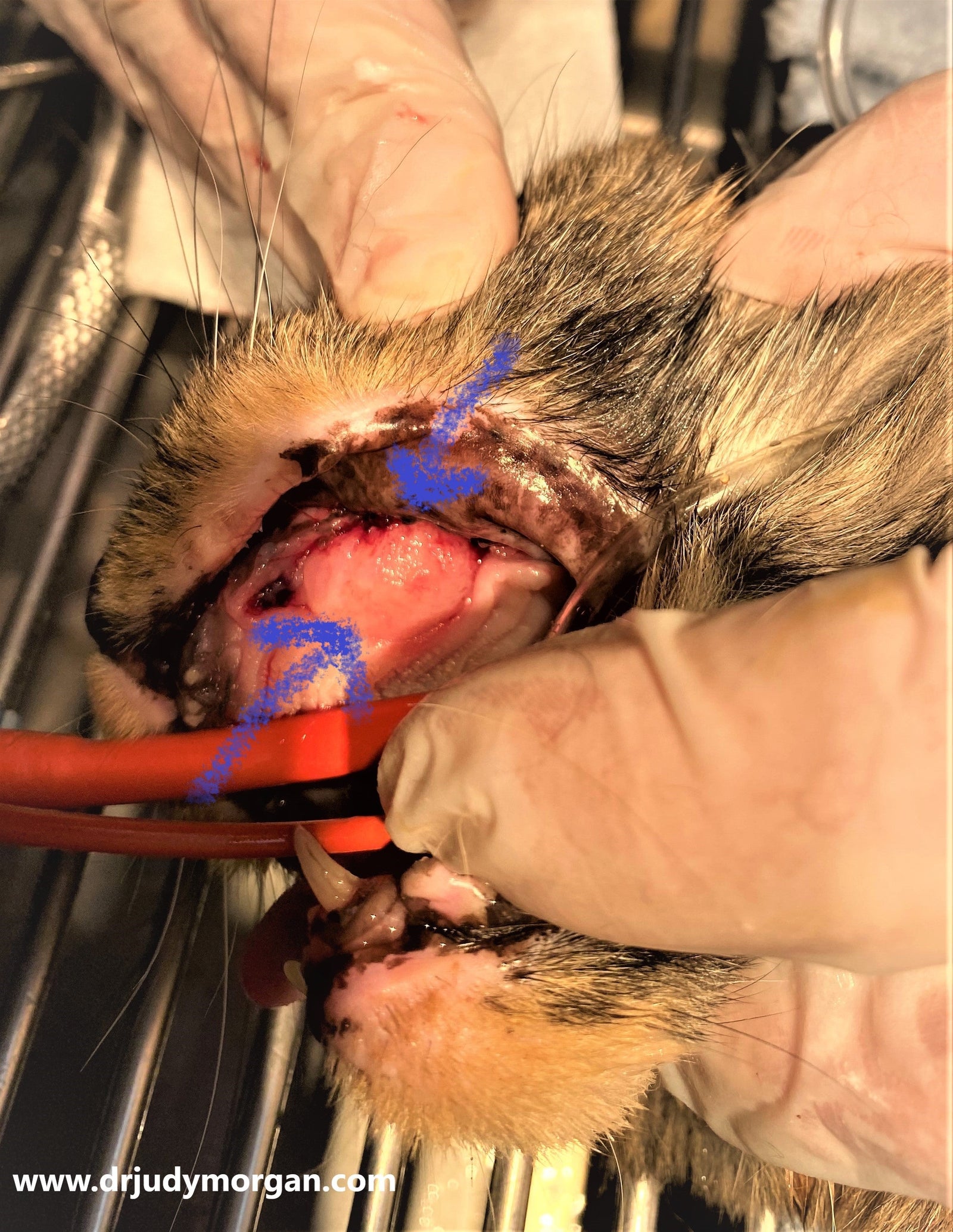Tumors have a way of hiding in unsuspecting places, often not found until too much damage has occurred leaving the body's immune defenses unable to fight the cancer.
Twice this past week we had animals come into the office for routine dental cleaning procedures that resulted in finding a mass within the oral cavity. We cannot determine whether a mass is benign or malignant just by visual exam, although sometimes the character of the mass can be a good clue. Removing the whole mass if possible, or a piece of the mass, for biopsy is the preferred diagnostic test.
Masses that bleed easily, are very friable (break apart easily), or have destroyed surrounding tissues, are more likely to be bad actors. Masses that are solid and live on the surface without invading surrounding tissues are more likely to be benign.
Tumors within the mouth, in the intestines, or in the spleen are often detected late in the course of disease. There are no reliable blood markers for these areas, unlike enzyme elevations that may be seen with masses in the liver or kidneys. Both the animals we saw this week had normal laboratory values on pre-operative screening tests.
Often, particularly in cats, severe periodontal disease may be a sign of underlying cancer, especially if the dental disease is more pronounced in one region of the mouth. This cat was already missing many teeth, but the teeth in the area of the tumor were loose because the tumor had pushed them out of their bony sockets.
Don't ignore dental disease, bad odors from the mouth, blood in the saliva, excess drooling, or pawing at the mouth. Some animals may chew with the head cocked to one side or may swallow food without chewing when they have oral pain. Sometimes they will stop eating altogether.
Maintain oral health by brushing or using high quality dental products. Be sure to examine your pet's mouth as well as you can at least once daily. Report anything unusual to your veterinarian.

Disclaimer: This content is for informational purposes only and is not meant to diagnose, treat, or replace consulting a primary veterinarian for individualized care.

